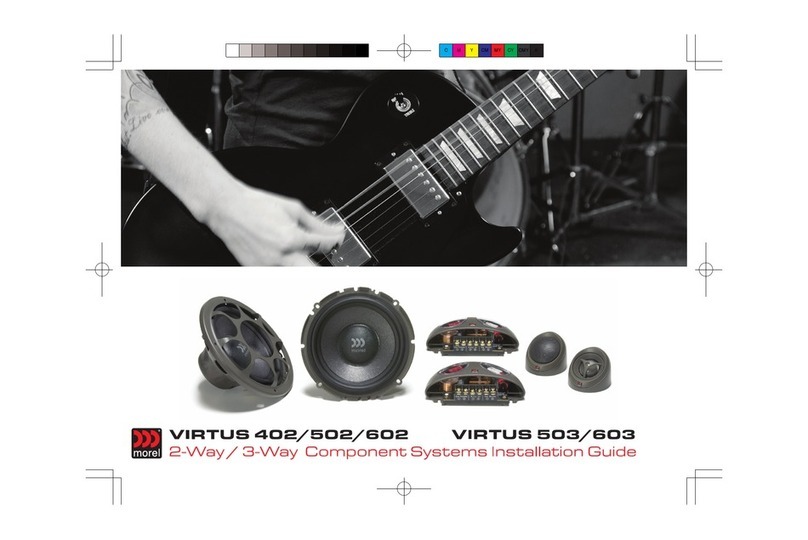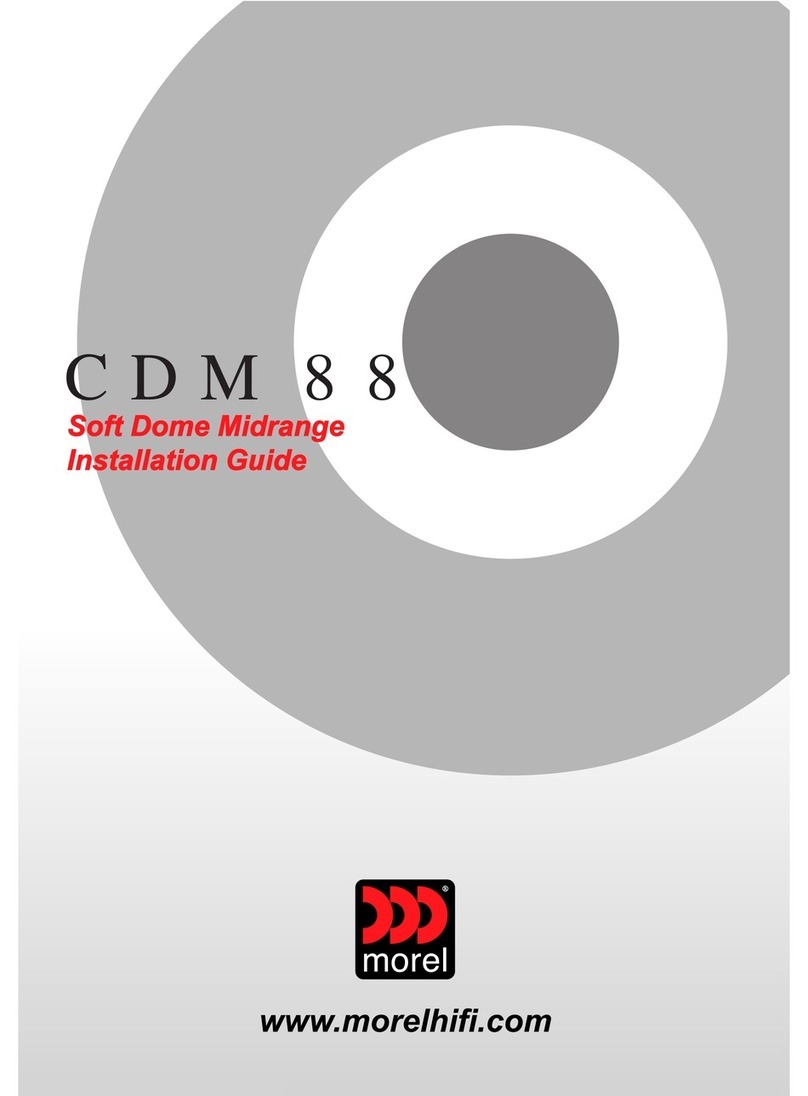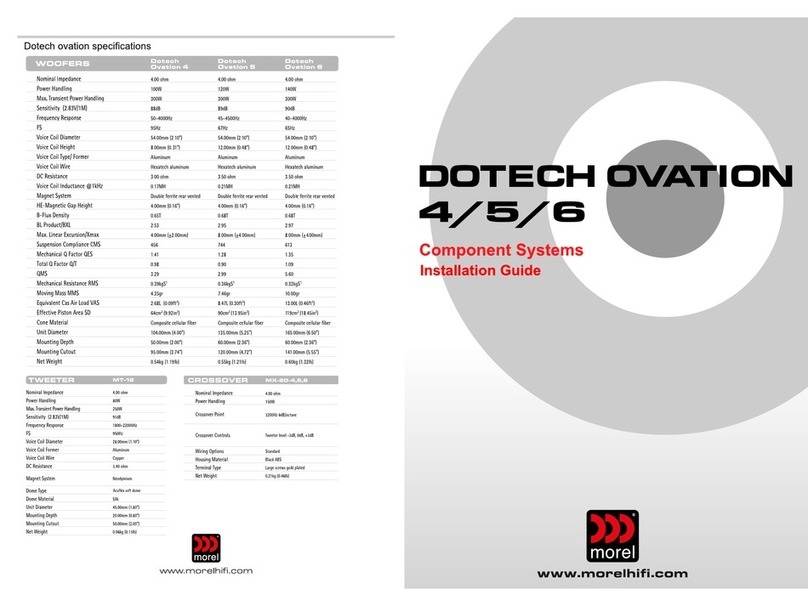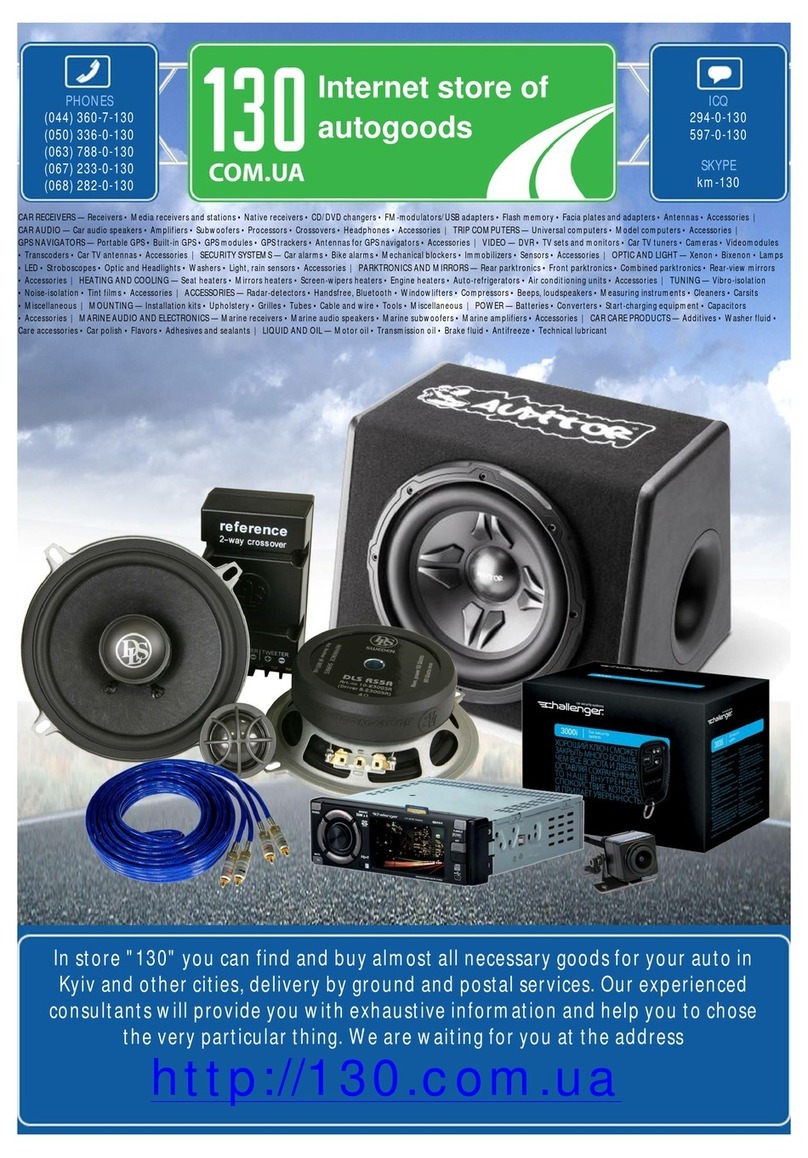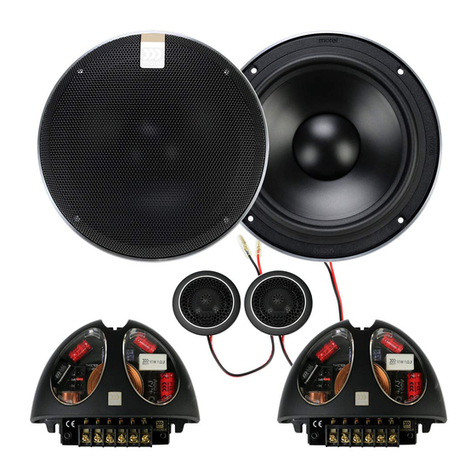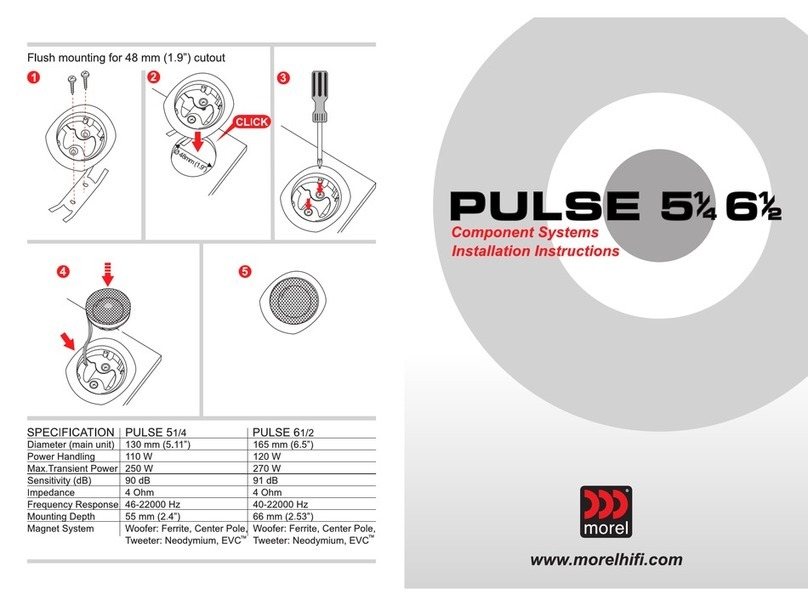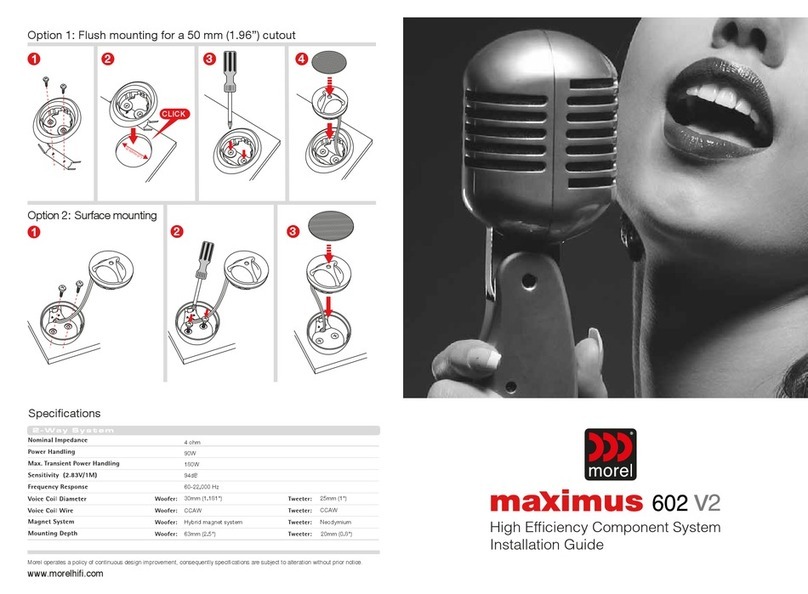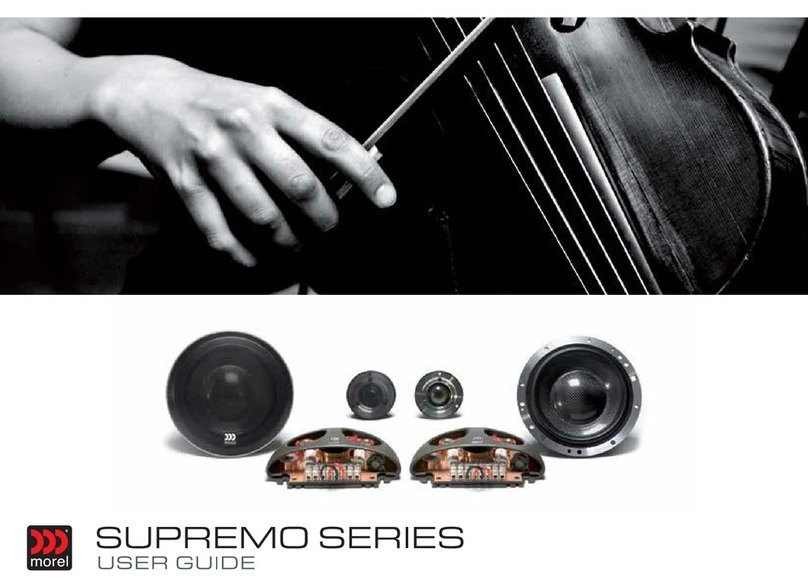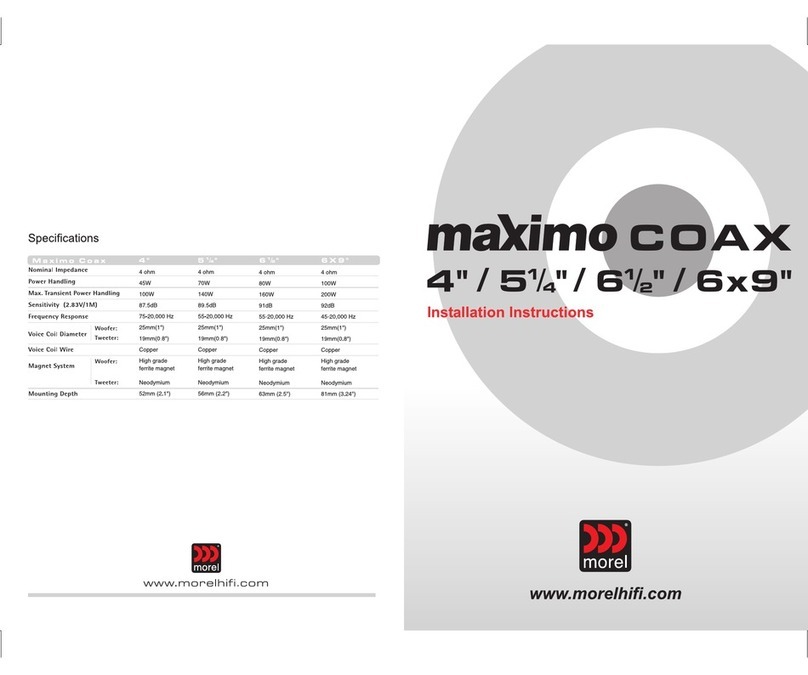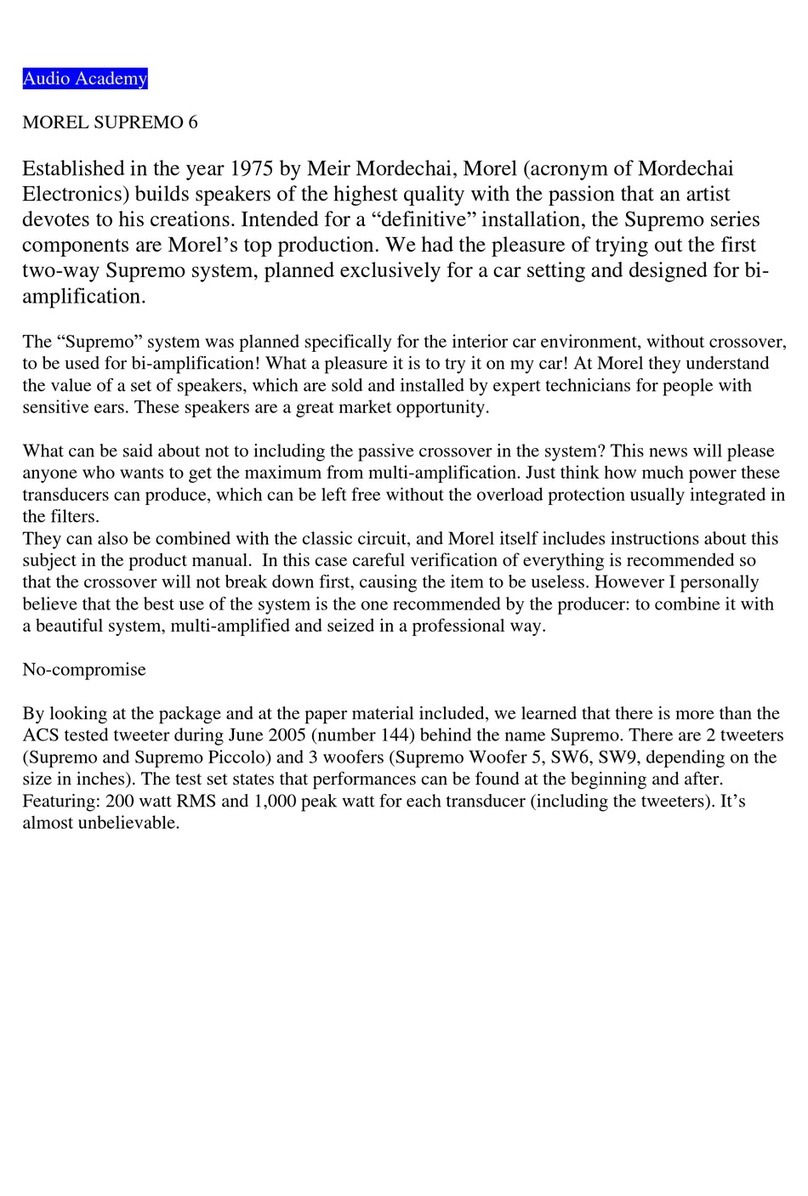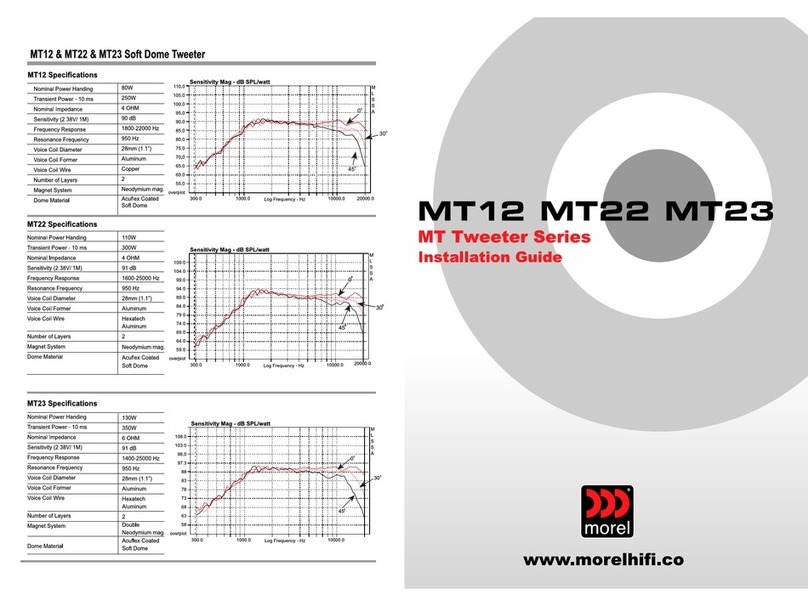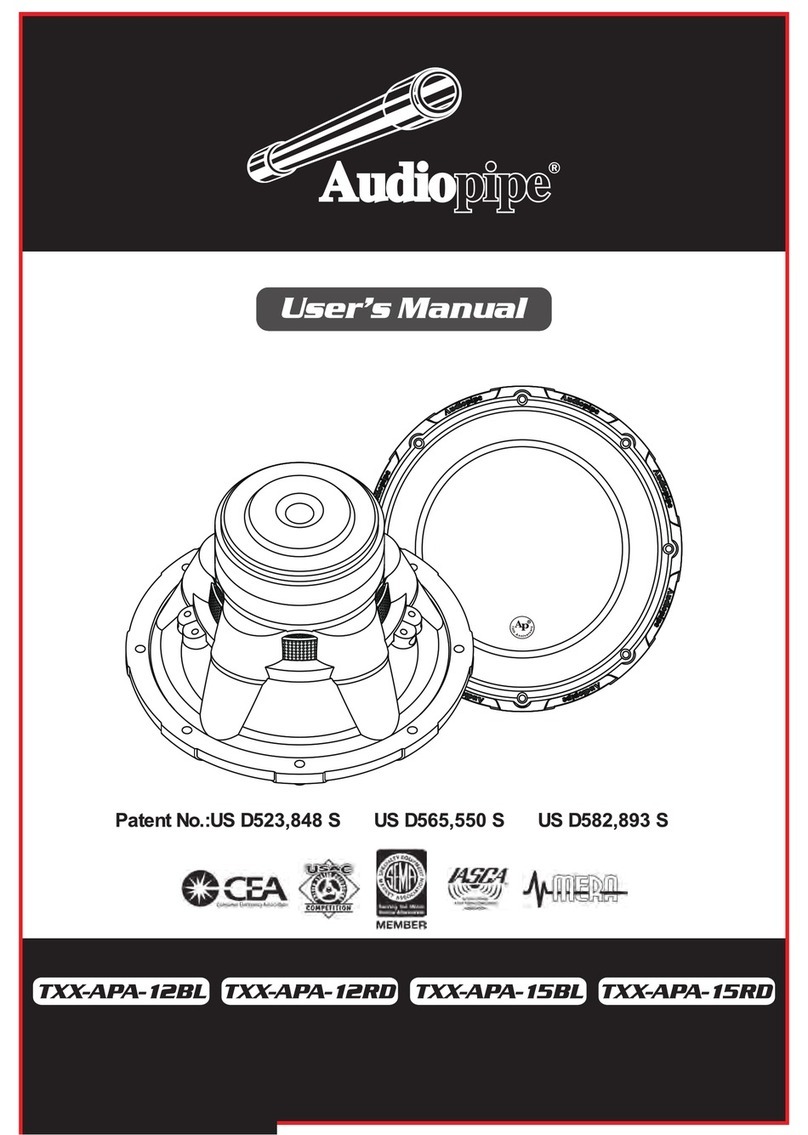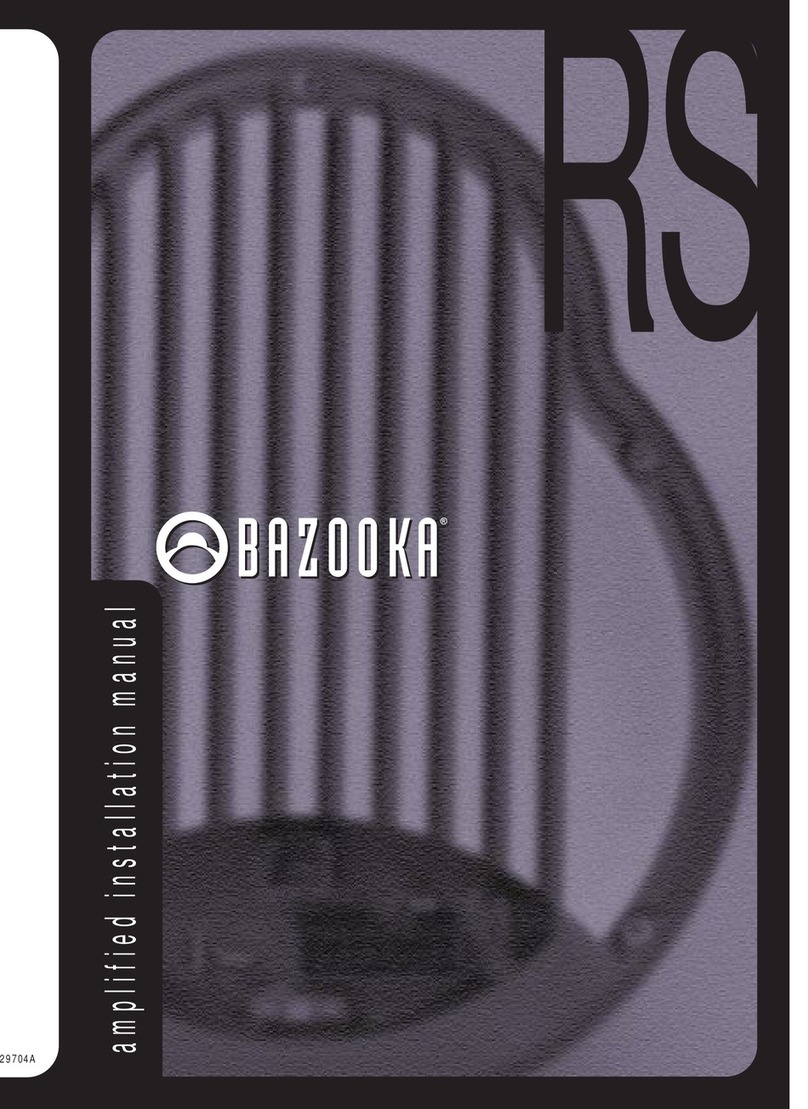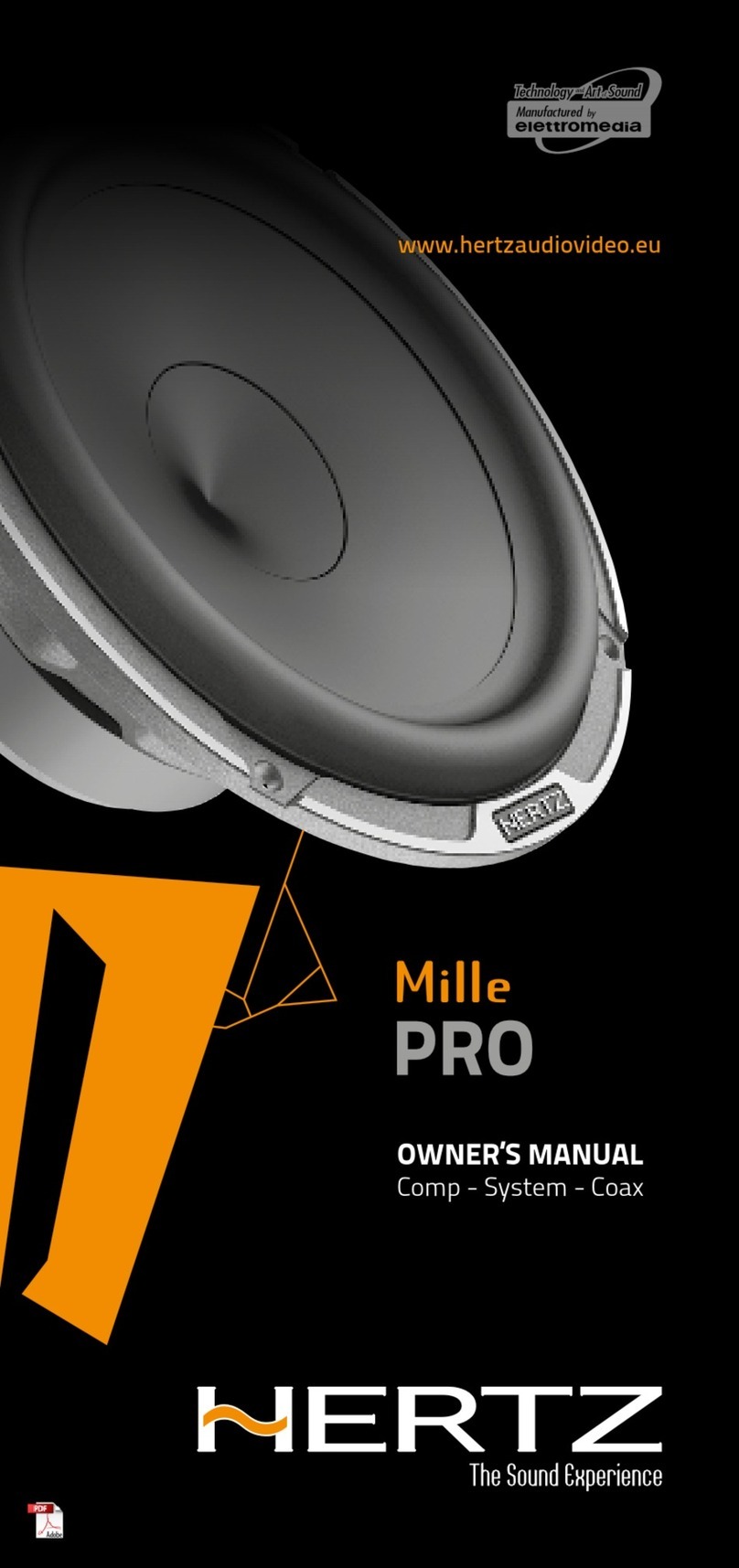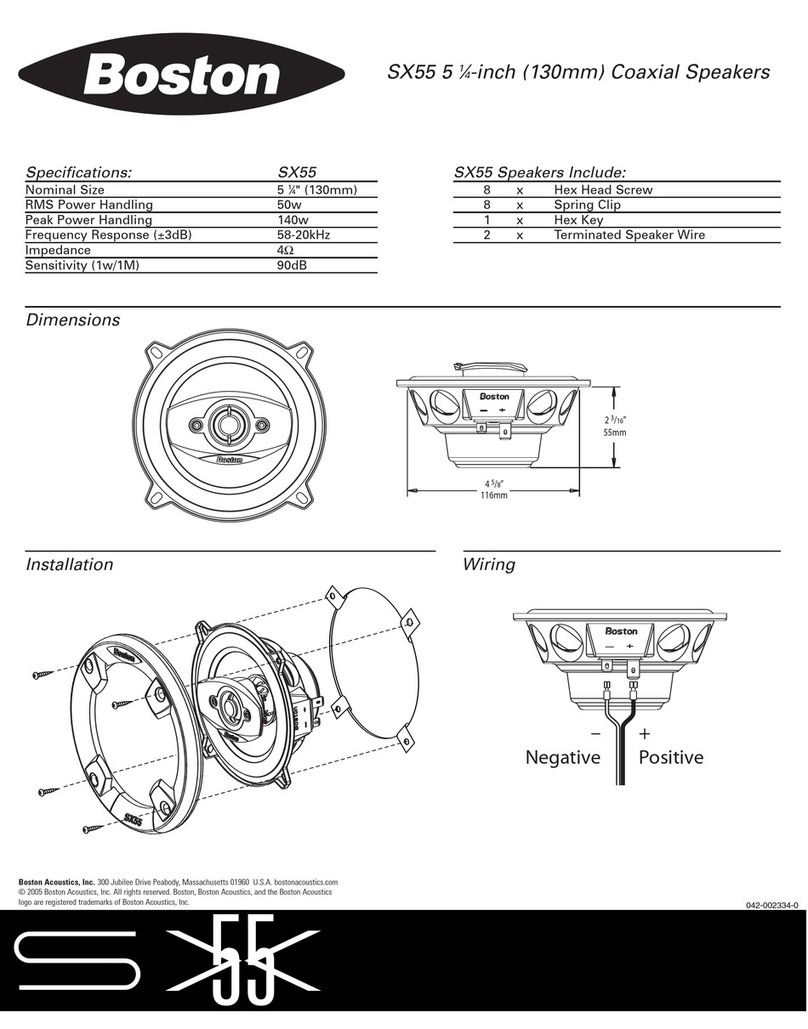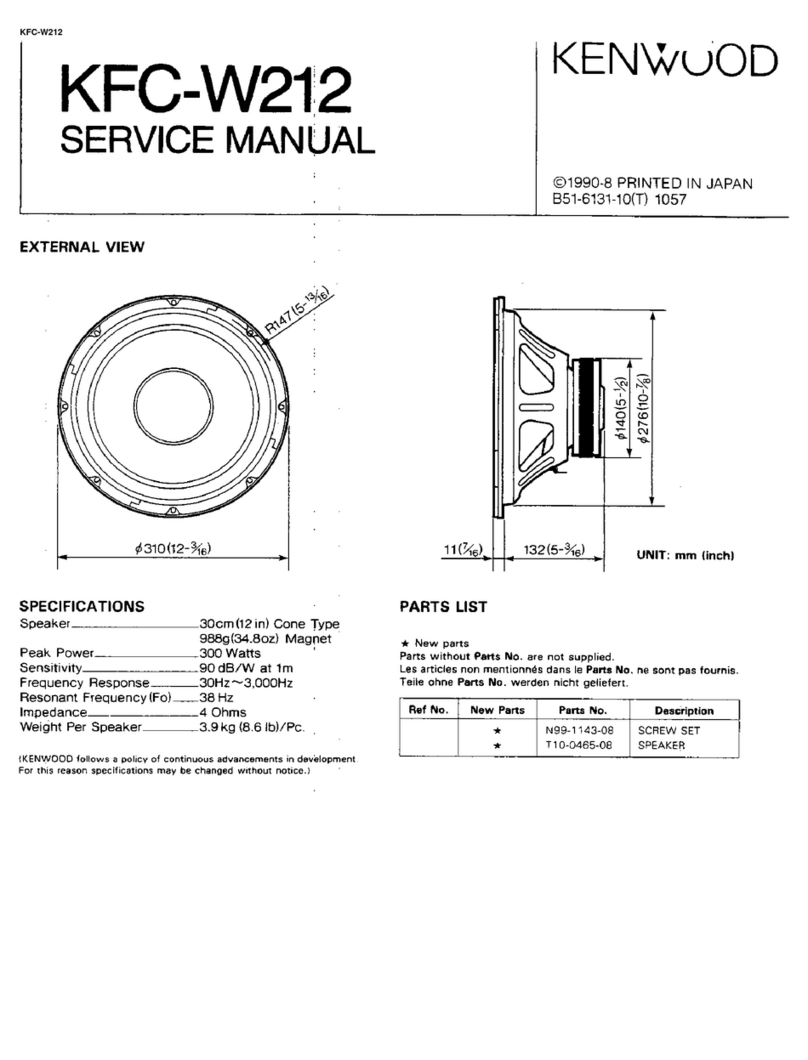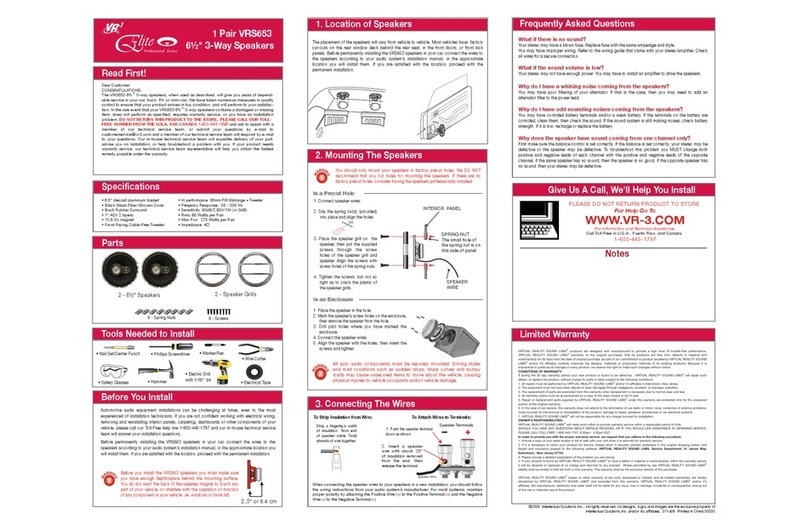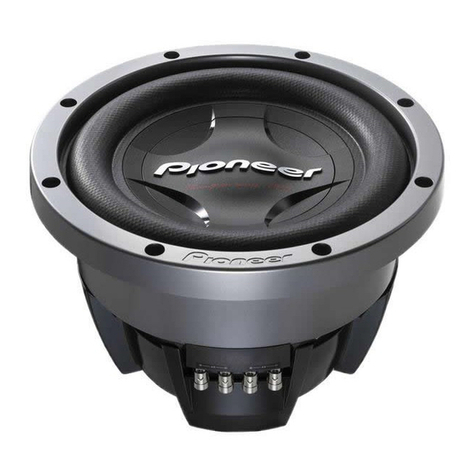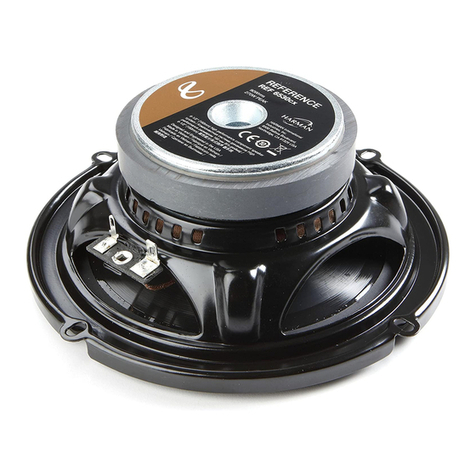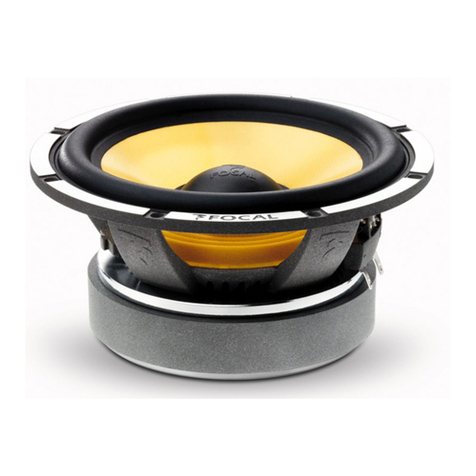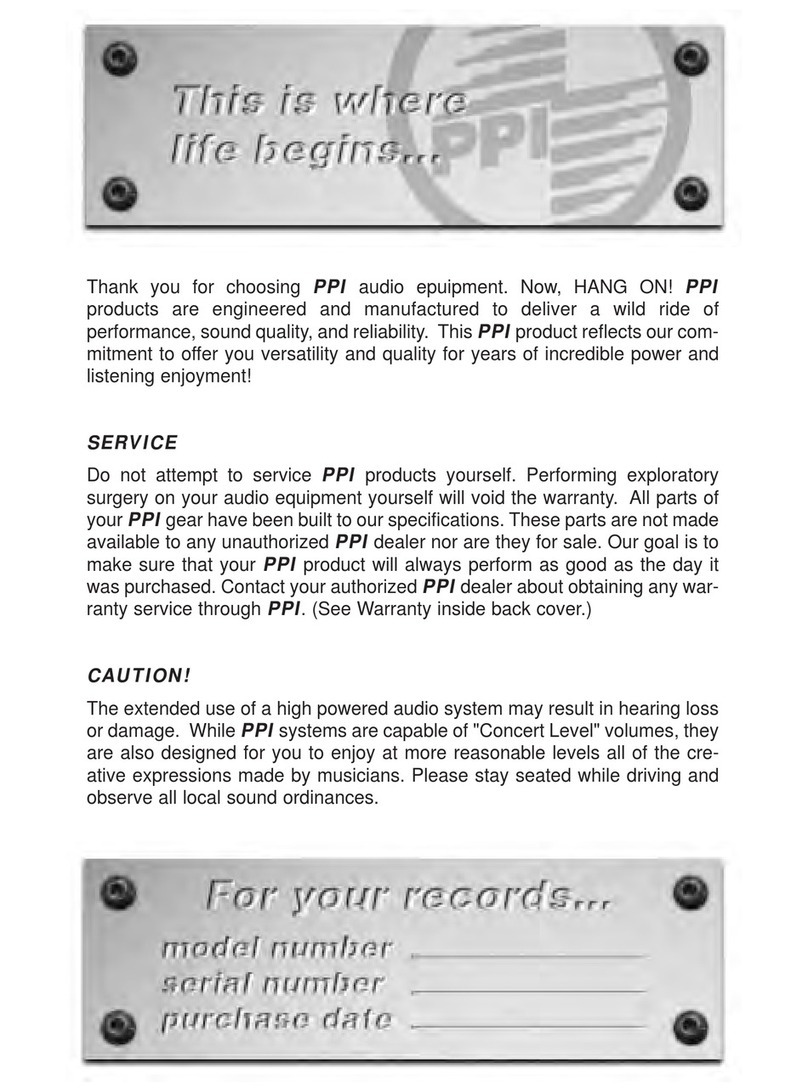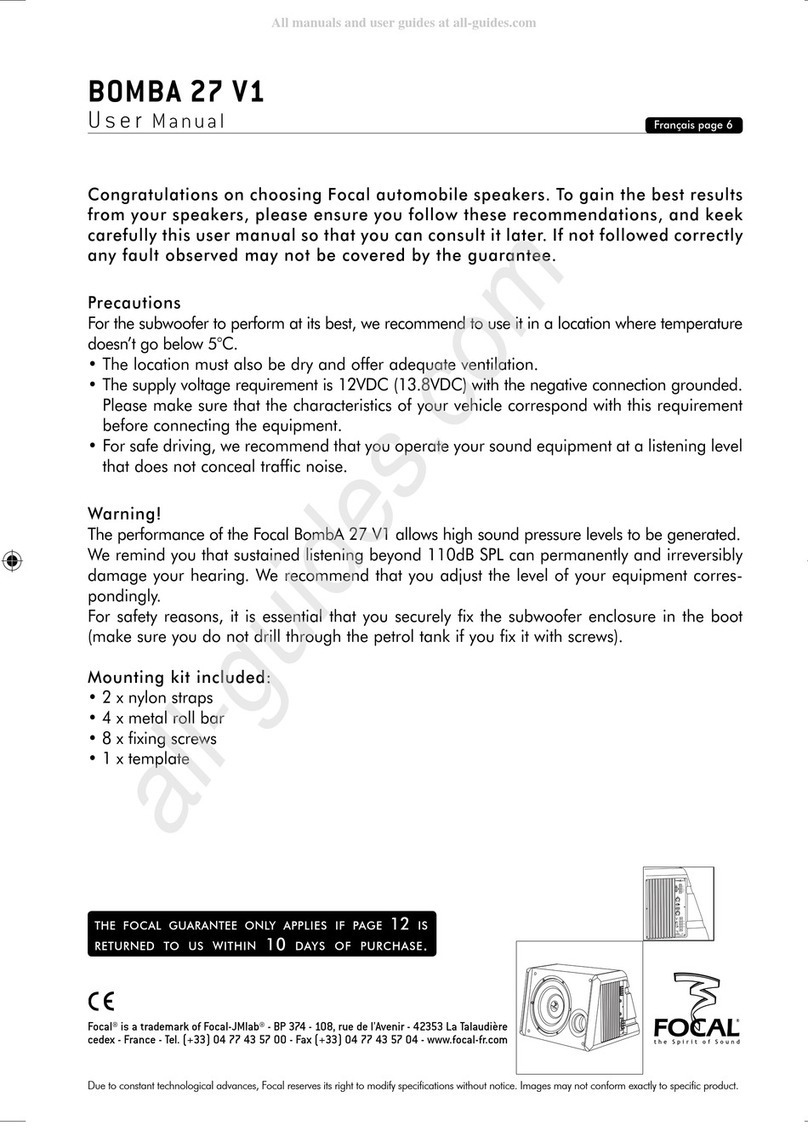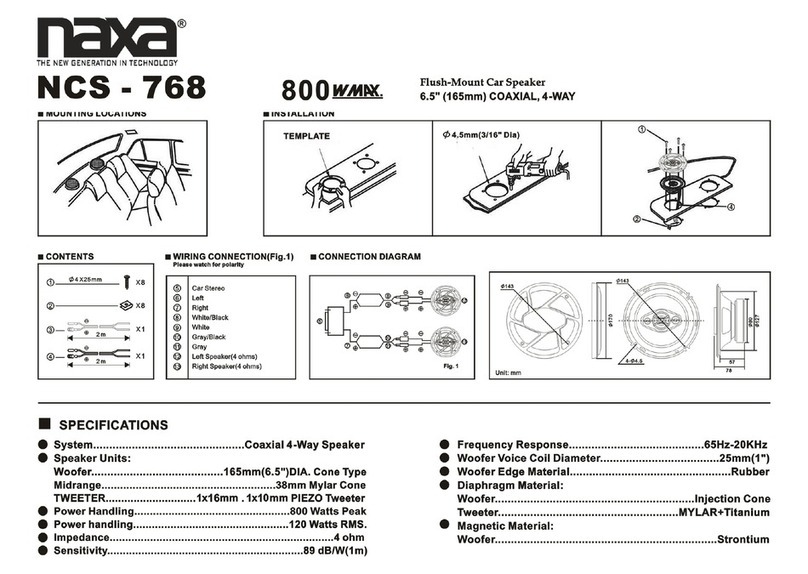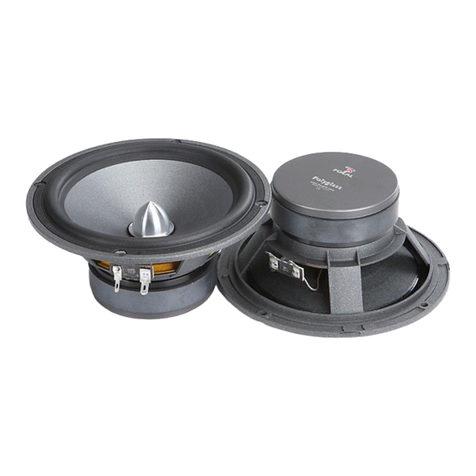FOLK
REBECCA PIDGEON
“SPANISH HARLEM”
Simply put, this Chesky Records record-
ing of Rebecca Pidgeon singing
“Spanish Harlem” is a model audiophile
soundtrack. Pidgeon’s vocals are lust-
worthy, real and extremely revealing.
When listening to this track there should
be a fine sense of transparency, good
depth and instruments should be simple
to localize. Rather than ending this para-
graph with a conclusion, I’ll give it to you
here: the Dotech Ovation 6 fared rather
well. Pidgeon’s vocals were well focused
side-to-side, but had a tendency to ele-
vate ever so slightly with higher pitches.
Her airy tone was consistent and smooth
in all but her lowest octaves where a
small amount of resonance could be
heard. The offensive tones were also
perceived during certain notes of the
piano. The symphonic violins, one left,
one right, were in perfect tone and easy
to differentiate, even when they over-
lapped. The shaker to the starboard side
of the stage was just as admirable, easy
to locate, and each shake was distin-
guished from the next. However, a cou-
ple items were less than ideal. Character
and resonant details of the stand-up
bass did not engage me, and there was
a certain amount of depth and trans-
parency missing from the soundstage.
Even though those aspects were weak,
this track played back easily on the ears.
Score: 7.5/10
JAZZ INSTRUMENTAL
MONTE ALEXANDER
“SWEET GEORGIA BROWN”
With Monte Alexander on the piano, a full
horn section, and two sets of drummers
and two basses, this rendition of “Sweet
Georgia Brown” is filled with energy and
excitement. In this audition, the image
boundaries of each instrument were
clearly defined, yet I still perceived the
layers of the instruments as a bit shallow.
playing within range of the tweeter were
perceived with greater height in the
soundstage. I can’t help but think that
this could be a phase error complicated
by the –12dB highpass tweeter crossover
and –6dB lowpass for the woofer.
Whatever the case, it was more of a
minor annoyance than a large concern.
Other instruments were clearly
defined and sharply focused, such as the
cowbell and shaker. The transparency in
this recording was better than in the pre-
vious tracks, and thus the metal drums
toward the rear of the soundstage were
well noted but a little dry in the response.
Score: 7/10
ALTERNATIVE
NEW RADICALS
“CRYING LIKE A CHURCH ON MONDAY”
The dynamics of “Crying Like a Church
on Monday” make it a very demanding
track and one I like to use to reveal the
changes in a system’s response at differ-
ent levels. As well, artist Ronan Keating’s
broad vocal range and somewhat off-
pitch style can be trying when not played
back with authenticity. This is one of
those songs you don’t have to listen to
several times to know that the system is
reproducing it properly, or improperly.
I started the audition at a subdued
listening level to get a feel of the system.
Tonal balance was very nice and the dis-
tinct image of each instrument and
Keating were well defined. There was an
ever-so-slight harshness to the upper
range of Ronan’s vocals, but the piano,
percussions and guitar were rock solid.
Raising the volume to a moderate
level, there were some changes to note.
Keating’s vocals became less concen-
trated and elevated above the sound-
stage as his range peaked. The slight
harshness heard in his vocals at the
lower level revealed itself even more. To
this I also noted several strikes to a cym-
bal or hi-hat by the percussionist that
jumped out, causing slight disarray in the
perception of the drum set. To me it
sounded as if there might be a minor
quibble in the response of the tweeter an
octave or so above the crossover point.
Aside from my nitpicking the tonal
balance of the system, the rest of the
composition was very likable with good
articulation amongst the remaining instru-
ments. It’s also worth noting that the
Dotechs performed admirably with a
good dose of power, better than some
systems costing twice as much.
Score: 7.5/10
REGGAE
ZIGGY MARLEY AND THE MELODY MAKERS
“KEEP MY FAITH”
I absolutely love this track! Its composi-
tion is simple and yet it is very ubiqui-
tous. The track starts with a harmonica,
left, and an electric guitar followed by a
shaker to the opposite side. Seventeen
seconds in, the trio is joined by the first
of a complex set of drums whose
arrangement is left and right of the
soundstage. This is one of the few tracks
I’ve found with a low bass array that is
truly stereo — and a difficult proposition
for speakers to play with absolute defini-
tion. As the track moves forward, the
bass gets complicated with the introduc-
tion of a closely mic’d kick drum and
rather large wood drum with a prominent
composure; all the while Ziggy and the
Melody Makers keep verse.
Capturing the exact location of the
various drums was a bit of a struggle
with the Dotechs. Most of the lowest fre-
quency information was centralized,
although some of the skin tones were
present and accurate in their setting.
Much of this could be attributed to the
dry and meager low-end response of the
woofers. To be fair, the 6 1/2-inchers are
not subwoofers and they do an excellent
job in their primary function. As a matter
of fact, the resolution of the harmonica
and shaker, and detail in Ziggy’s vocals
were pretty spectacular. With the right
sub, this system would be fabulous.
Score: 7/10
However, the tonal balance and overall
purity in this performance impressed me.
The horn section portrayed itself through
the Dotechs with spectacular rasp, and
the near perfect placement of the individ-
ual horns that started hard left to just
right of center stage. Each drum set
clearly defined itself right down to the
location of every snare, tom and cymbal,
but the garbled hum of Alexander during
certain low spots was played without any
real presence. The Dotechs also had a
difficult time distinguishing the low notes
of both basses when competing with the
drum set, getting lost at times. However,
the 4-second acoustic bass solo toward
the end was commendable.
Score: 8.5/10
CONTEMPORARY
STING “FRAGIL”
Even though I’m not fluent in the lan-
guage, I find myself constantly drawn to
this track. The Portuguese version of
“Fragile” by Sting has a gentle, harmo-
nious nature about it. It’s been said that
when you listen to music recorded in a
language foreign to you, you tend to pay
closer attention to the finer elements that
make up the composition of the song,
not the words. In that respect, “Fragil”
certainly works.
This recording has a fabulous
ambiance about it and renders the feeling
of a large, vacant room that should be
evident in the reverb of the acoustic gui-
tar and the airiness in Sting’s vocals.
Resolution of space by the Ovation 6 was
superb, especially with the acoustic gui-
tar, providing good detail of the room’s
width and depth. Sting’s vocals were not
as impressive — yes, they imparted a
perception of space to the immediate
environment, but there was excessive
sibilance in Sting’s upper vocal range.
This exaggeration was also accompanied
by an image that was less than stable,
moving up and down with the elevated
tone of his voice. I noticed a similar
occurrence with instruments — those
LISTENING
The Morel Dotech Ovation 6 is an
absolute must for anyone looking to
explore the finer element of sound
reproduction. This system does just
about everything right with only
minor issues to speak of. And
though the retail of $499.95 is not
pocket change, it’s worth every
penny and more. Kudos to Morel for
bringing a mix of art with design to a
product that is priced right!
CONCLUSION
POINTS MOREL DOTECH
POSSIBLE OVATION 6
Overall sound quality 20 16
Tonal balance (above 80Hz) 10 07
Low frequency extension 10 06
Clarity at low volume 10 09
Clarity at high volume 10 07
Image stability 10 07
Listening fatigue (moderate volume) 10 09
Flexibility/Ease of installation 20 16
Total subjective score 100 77
Ratings: Average performance is equal to 1/2 total points possible.
SUBJECTIVE SCORE CHART
REVIEW COMPONENTS
Posted with permission from the March 2007 issue of Car Audio and Electronics ® www.caraudiomag.com. Copyright 2007, PRIMEDIA Inc. All rights reserved.
For more information about reprints from Car Audio and Electronics, contact Wright’s Reprints at 877-652-5295
